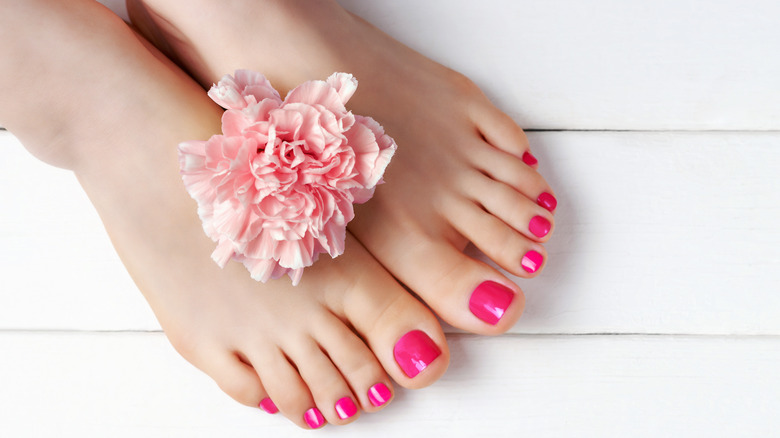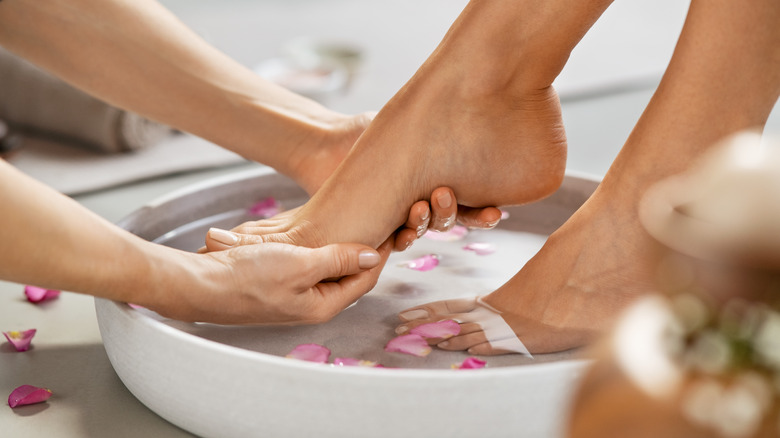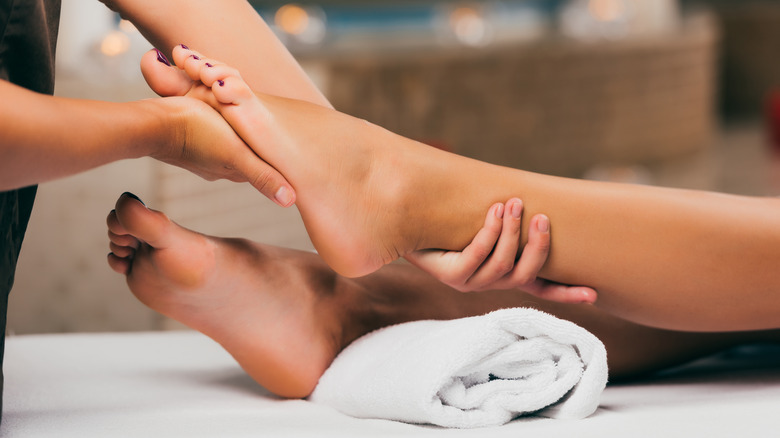What Are Waterless Pedicures, And Are They Better For Your Toenails?
There is no doubt that pedicures can be a restorative treat especially since the feet are a pleasure center of the body. Besides being able to do absolutely nothing while your feet and toes are carefully attended to, the whole process tends to be so soothing that it may very well reset a busy day, not to mention a chaotic mind.
From the initial soothing foot soak in warm water to the luxurious foot massage, your feet undergo a transformative process. The simple act of cutting the cuticles, shaping the nails, and moisturizing rough foot skin can leave feet feeling brand new. You may enter the salon with overgrown toenails and cracked heels but emerge with feet and toenails as pretty as can be. Yet some salons are doing away with one very important part of getting a pedicure which may leave customers worried about missing a very enjoyable step. Many salon owners are choosing to make waterless pedicures a staple.
Waterless pedicures are more sanitary
One of the benefits of doing away with the foot soak and having a waterless pedicure is that it is less likely to spread germs and infection. Salon owner Apfel Glass tells Byrdie why she utilizes only waterless pedicures in her salons, "Water is a breeding ground for germs. Even when the water is changed out between clients [at a regular nail salon], germs still live in the bowl."
Though salons may have strict cleaning rules, there is always a chance of contamination. Salon owner Karen Kops says, "Anytime you're dealing with skin or other gunk in a tub, especially a tub with jets, that gunk can come right back into the water, even if you clean the heck out of the thing." Environmentally and financially speaking, salons that don't use water soaks save thousands of gallons of water, not to mention a lot of money. The best part is that the luxury of the pedicure doesn't get lost.
Nail polish sets better with waterless pedicures
While you might think skipping the foot soak might not give you a decent pedicure, the opposite may be true. Water causes the nail bed to expand, and that can make nail polish go on unevenly. "Performing pedicures sans water leaves skin feeling softer and more hydrated," says salon manager Audrey Maxwell (via Nail Pro). "And since skin cells aren't already holding onto moisture from soaking in water, products are able to fully absorb."
As for the feet themselves, in waterless pedicures technicians use creams to exfoliate and moisturize. Some also utilize heat treatments, which nicely replace warm water's soothing comfort. These lotions soften the cuticles and prepare them to be cut or pushed back, just as water does. Waterless pedicures also enable the polish on toenails to last longer. Though you don't need to refresh your pedicure as often as a manicure, skipping the water helps the toenails chip less often. Skipping a soak allows toenails to become stronger and healthier since water can weaken nails before any polish goes on.


